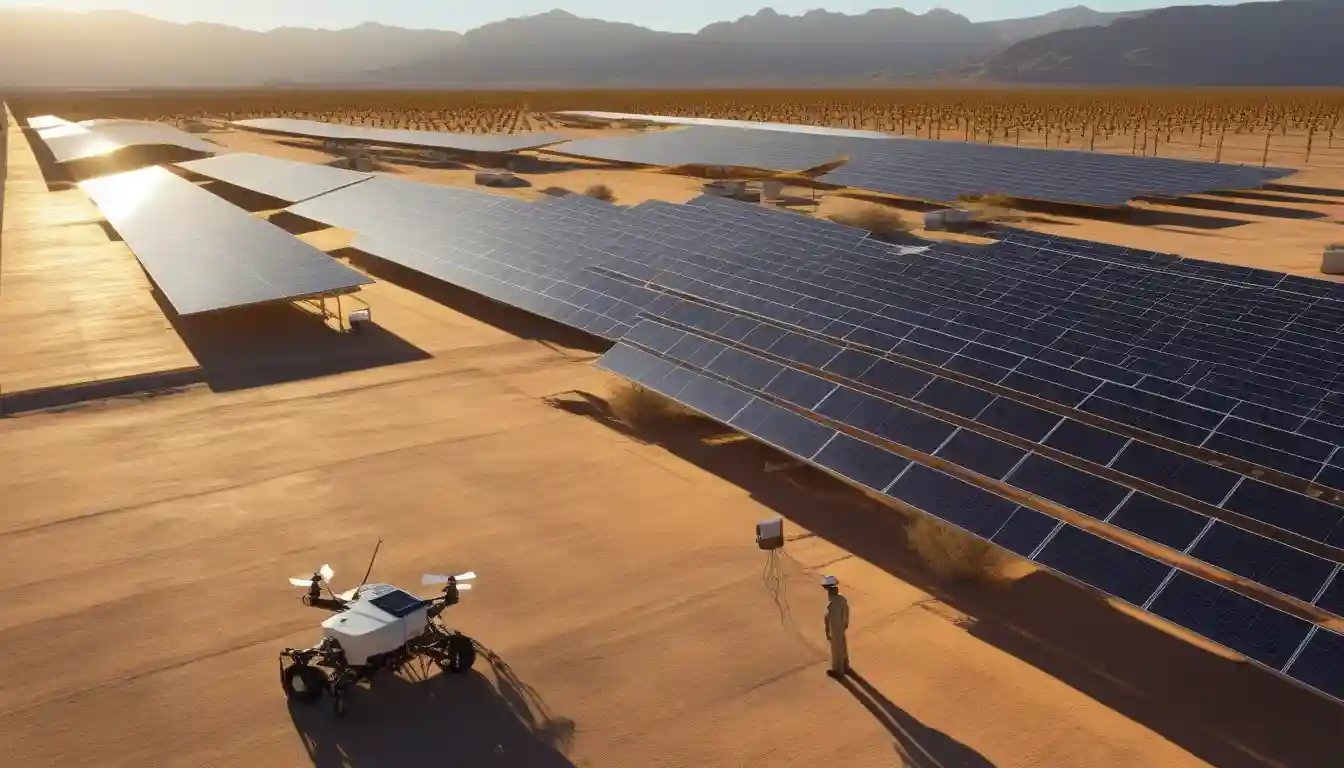
Trump AI Action Plan Unlocks $90 Billion Investment in Data Center Energy Projects
America's AI Power Play: Trump's Deregulation Push Ignites $90 Billion Energy Revolution
Silicon Valley and Coal Country Forge Unlikely Alliance in Pennsylvania
The glimmering server racks of America's next-generation data centers may soon draw their electricity from an unexpected source: the same Appalachian coal seams and natural gas wells that powered the nation's industrial revolution. At a groundbreaking summit in Pittsburgh last week, the Trump administration and tech industry giants unveiled an audacious $90 billion plan to marry America's AI ambitions with a sweeping overhaul of its energy infrastructure.
Against the backdrop of Pennsylvania's energy heartland, President Trump and industry leaders detailed a vision that would fundamentally reshape how America powers its technological future—prioritizing rapid deployment and domestic energy production over the regulatory frameworks of the previous administration.
"We're witnessing the birth of a new industrial revolution," remarked an energy analyst present at the Pittsburgh summit. "But instead of steam engines, we're talking about neural networks that require power on an almost unimaginable scale."

The Great Regulatory Rollback: Speed Over Scrutiny
The centerpiece of this transformation—the administration's "AI Action Plan" expected to be released by July 23—represents a dramatic pivot from the cautious, oversight-heavy approach that defined previous AI policy. According to sources familiar with the forthcoming plan, the administration will emphasize expanding energy sources for data centers and removing regulatory barriers that industry leaders have long criticized as impediments to innovation.
This deregulatory thrust extends beyond algorithms and into the physical infrastructure that powers them. In a significant policy shift, the administration is considering nationwide Clean Water Act permitting for data centers—effectively creating a federal fast-track for projects that would otherwise face a patchwork of state-level approvals.
The administration's permitting reforms would allow data centers to sidestep grid bottlenecks entirely by building their own onsite power generation facilities. This move effectively transforms tech companies into energy producers—able to generate their own electricity and potentially sell excess power back to the grid.
"What we're seeing is the emergence of the tech-utility hybrid," noted a Pennsylvania-based infrastructure investor. "These won't just be data centers; they'll be self-contained energy complexes with computing capacity attached."
Pittsburgh's $90 Billion Promise: From Concept to Construction
The administration's vision found its most concrete expression at last week's Pennsylvania Energy & Innovation Summit, where a parade of corporate announcements painted a picture of unprecedented investment in the state's energy and technology sectors.
Blackstone and its data center platform QTS committed over $25 billion to develop AI infrastructure, with plans to position new facilities near gas resources and generation assets—effectively short-circuiting the years-long process of securing grid connections.
Google matched this ambition with its own $25 billion program across the PJM power market, including a massive hydropower procurement deal that could deliver up to 3,000 megawatts from refurbished facilities. CoreWeave unveiled plans for a $6 billion data center in Lancaster, while FirstEnergy pledged billions for grid expansions.
The summit wasn't without its critics. Outside the venue, environmental activists and community organizers voiced concerns about water usage, fracking impacts, and potential displacement of local residents.
"This isn't just about algorithms—it's about who bears the environmental costs," one protestor told local media, highlighting the tension between technological progress and community impact.
Energy Winners and Losers in the AI Economy
The administration's approach creates clear winners and losers in America's energy landscape. Coal, natural gas, nuclear, and large hydropower projects stand to benefit from streamlined approvals and policy support. Wind and solar developers, meanwhile, face new headwinds, with the Interior Department recently adding 69 Secretary-level approvals for renewable projects on federal lands.
This selective acceleration of certain energy sources reflects a deliberate strategy to prioritize dispatchable power generation—resources that can produce electricity on demand—over intermittent renewables.
"The reliability demands of AI compute are reshaping our entire approach to electricity," explained an energy economist tracking the sector. "These workloads can't afford to go dark when the wind stops blowing."
The Billion-Dollar Question: Will the Money Flow?
While the Pittsburgh announcements generated impressive headlines, market observers note that many projects remain in preliminary stages, subject to final investment decisions, permitting approvals, and power purchase agreements.
The administration's ability to deliver on its permitting promises will prove crucial. A nationwide Clean Water Act permit for data centers would represent a significant bureaucratic achievement, potentially shaving months or years off development timelines. However, legal challenges from states and environmental groups remain likely.
The Senate's response to House-passed legislation that would preempt state AI laws for ten years presents another uncertainty. Reporting indicates significant opposition to broad federal preemption, suggesting that technology companies may still face a complex regulatory landscape despite the administration's best efforts.
Where Smart Money Flows: Investment Implications
For investors navigating this rapidly evolving landscape, several opportunities emerge from the policy shift:
Natural Gas Infrastructure: Companies with Marcellus and Utica shale exposure stand to benefit from increased local demand and potential fast-track approvals for pipeline expansions serving data centers.
Private Infrastructure Platforms: Firms like Blackstone that can orchestrate land acquisition, generation assets, and computing tenants may capture premium returns by controlling scarce interconnection rights in power-constrained markets.
Nuclear Life-Extension: The renewed emphasis on nuclear reliability may translate into support for license extensions and uprates at existing plants, creating opportunities in engineering and component manufacturing.
Hybrid Energy Models: Projects combining firm baseload power with limited renewable components may offer the best risk-adjusted returns, balancing reliability needs with long-term environmental considerations.
Investors should approach the sector with appropriate caution, however. The durability of current policies remains uncertain, community opposition could delay high-profile projects, and the relationship between AI growth projections and actual electricity demand contains significant uncertainty.
"The smart play isn't betting on every announcement making it to the finish line," advised a portfolio manager specializing in energy transition. "It's identifying the bottlenecks—interconnection rights, water access, community support—and investing in the assets that solve those specific problems."
As the official unveiling of the AI Action Plan approaches, one thing remains clear: America's AI ambitions and energy future have become inextricably linked, creating a new industrial landscape where computing power and electrical power advance in lockstep—for better or worse.
Investment Thesis
| Category | Key Developments | Investor Implications | Risks/Catalysts |
|---|---|---|---|
| Policy Actions | - Trump’s Jan 2025 EO revoked Biden’s AI regulations, prioritizing "AI dominance" and deregulation. - Proposed 10-year moratorium on state AI laws (House-passed; Senate uncertain). - Nationwide Clean Water Act permit for data centers under consideration. | - Lower compliance costs for AI deployers if preemption succeeds. - Faster permitting for co-located data centers + dispatchable power (gas/nuclear). - Potential valuation uplift for midstream/gas assets. | - Senate may block broad preemption. - Legal challenges to nationwide permits. - Policy volatility if administration changes. |
| Energy Focus | - Favors dispatchable power (gas, nuclear, coal) over renewables for AI load. - Interior Dept. added review layers for wind/solar on federal lands (July 17, 2025). | - Gas/nuclear/hydro projects gain advantage; renewables face delays. - Higher power prices in capacity-constrained regions. - Opportunities in nuclear life-extension and hydro refurbishment. | - Overbuild risk if AI demand lags. - Stranded asset risk if carbon policies return. - Local opposition to fossil-linked projects. |
| Pennsylvania Projects | - >$90B in private-sector commitments (Blackstone/QTS, Google, CoreWeave) for data centers, gas plants, grid upgrades. - Emphasis on co-located power + compute to bypass transmission bottlenecks. | - Upside for Marcellus gas upstream/midstream. - Private infrastructure funds (e.g., Blackstone) may benefit from vertical integration. - Potential capex boom in PJM region. | - Execution risk: Many announcements are MOUs/LOIs. - Local protests over environmental impacts (e.g., water, fracking). - Permitting delays. |
| Pending Catalysts | - July 23, 2025: Expected AI Action Plan release. - Q3 2025: Possible nationwide CWA permit for data centers. - 2025 Legislative session: Senate action on AI preemption. | - Clarity on federal vs. state AI rules. - Accelerated data-center siting if permits streamlined. - Regulatory certainty could boost infra valuations. | - Senate gridlock on preemption. - Rulemaking complexity for federal permits. |
| Risks | - Policy whiplash if future administration reverses course. - Renewables slowdown tightens capacity margins, raising power costs. - Local opposition delays projects (e.g., NIMBY protests in PA). | - Compliance costs may rise if preemption fails. - Inflationary pressure on cloud/AI workloads due to higher energy costs. - Gas price volatility if demand outstrips pipeline capacity. | - Litigation risk for fossil-friendly policies. - Over-reliance on merchant power exposure. |
| Investor Opportunities | - Gas midstream/upstream (Marcellus/Utica). - Private infra platforms (Blackstone/QTS). - Nuclear life-extension specialists. - Hydro refurbishment tied to hyperscaler PPAs (e.g., Google’s 20-yr deal). | - Co-located power+compute projects offer NPV uplift. - Hybrid infra/project finance stacks for behind-the-meter generation. - REC/GPPA hybrids for ESG-focused investors. | - Differentiate between hype and FID-ready projects. - Stress-test contracts for policy reversal. - Monitor PJM interconnection queues and local permitting timelines. |
NOT INVESTMENT ADVICE